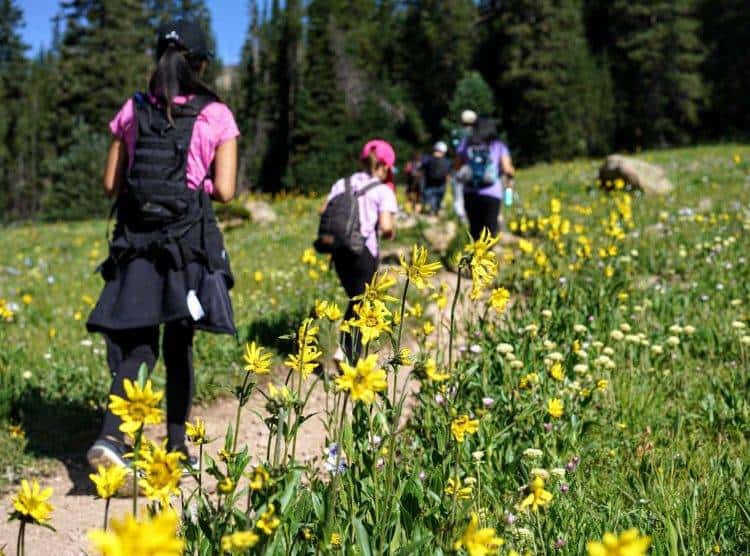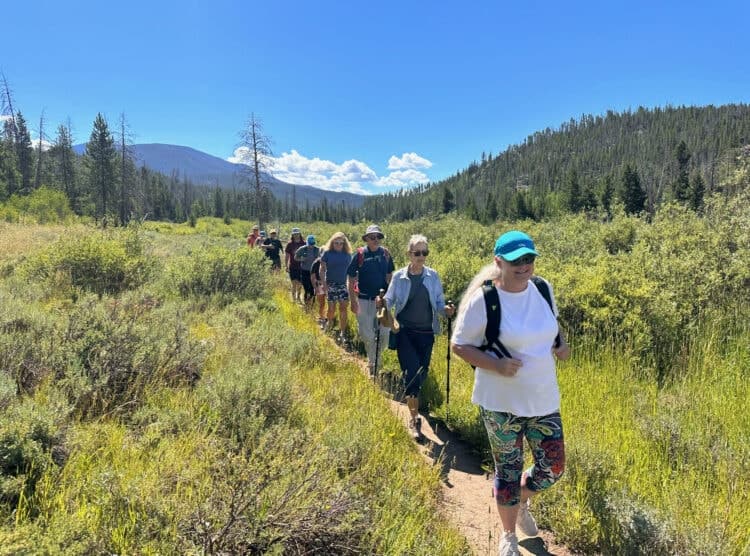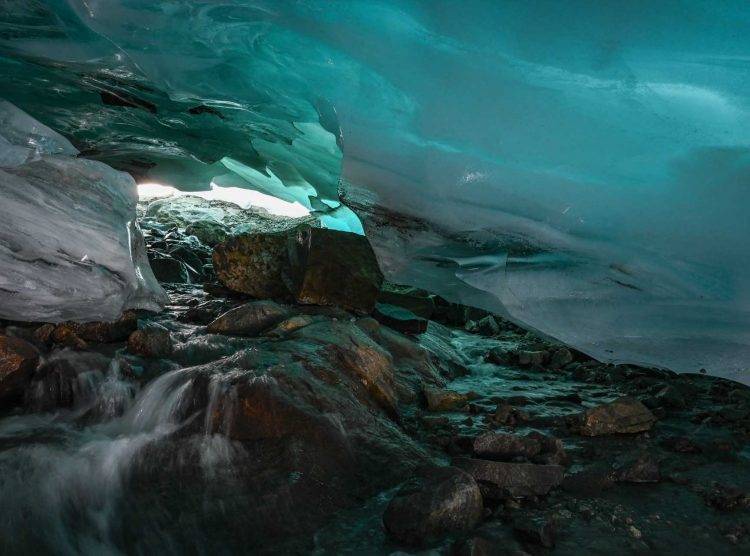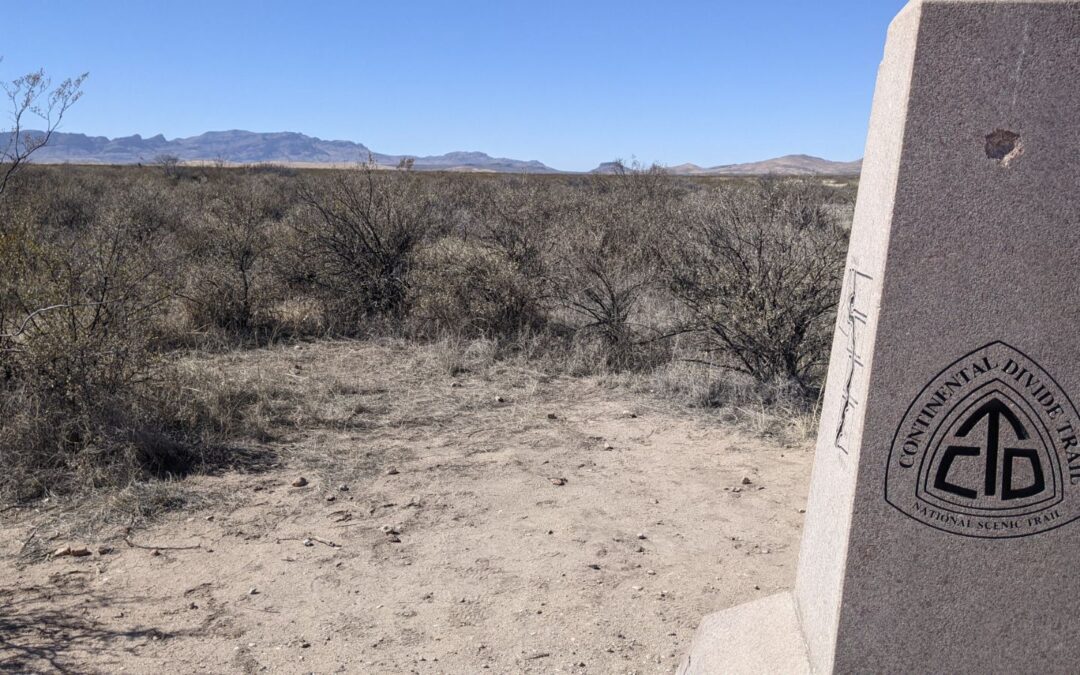About Us
The Continental Divide Trail Coalition (CDTC) is a 501(c)(3) national, non-profit organization building a strong community of CDT volunteers, enthusiasts, and supporters who want to see the Continental Divide National Scenic Trail (CDT) completed and protected.
Our Mission
CDTC’s mission is to complete, protect, and elevate the Continental Divide National Scenic Trail while engaging in and inspiring stewardship of the trail and its surrounding landscapes.
A Commitment to Trail Completion and Connection
CDTC remains committed to CDT completion as our highest priority. We also commit to trail connectivity as a means of realizing the trail’s full potential as a connector of landscapes, cultures, and communities along its path from Mexico to Canada. CDTC will prioritize trail completion and trail connection in our work.
CDTC’s Strategic Vision for 2025-2029

Our Vision
A completed Continental Divide National Scenic Trail establishes a fully protected corridor that ignites love and passion for the breathtaking landscapes of the Continental Divide and unites people from all cultures, communities, and trail experiences.


Our Values
CDTC conducts all relationships, transactions, and dealings with integrity and honesty and promotes working relationships with board members, staff, volunteers, partners, and program beneficiaries based on mutual respect, fairness, and openness inspired by the power and grandeur of the CDT.
About CDTC
The CDTC was founded in 2012 by volunteers and recreationists hoping to provide a unified voice for the Trail. Today, CDTC is a non-partisan 501(c)3 organization that works hand-in-hand with the U.S. Forest Service and other federal land management agencies to build a strong community of supporters who want to see the CDT protected not just for today’s users, but for generations to come.

Land Acknowledgement
CDTC staff and Board asks all trail visitors to join us in acknowledging the lands on which the CDT traverses across its entire 3,100 miles are the homelands of Indigenous and Native People and Tribal Nations. These traditional stewards of these lands have called these places home for millennia, and still call them home today. Many were persecuted or killed through genocide and were removed from these homelands. In all of our work, we honor these people, past, present and future, who continue to live, hold sacred, and steward all of the landscapes across which the Continental Divide National Scenic Trail traverses.
Why CDTC Was Formed
November 10, 1978
Congress established the Continental Divide National Scenic Trail (CDT). For many years following its designation, development and recognition of the Trail languished due to a lack of adequate federal funding for the Federal Agencies tasked with its oversight. In addition, public awareness and engagement in the volunteer stewardship necessary for keeping the Trail well-marked and maintained was almost non-existent. Finally, and most importantly, a lack of consistent direction and focus regarding the Trail’s identity, management, and national significance within the public lands it traversed often left it subject to the discretion of the land managers charged with its stewardship.
1978
The Continental Divide Trail Society (CDTS), a group established long before the Congressional Designation in 1978, and instrumental in the inclusion of the CDT in the 1978 legislation, has a narrow focus of influencing trail routing decisions made by the Agencies, and supporting the small, but highly passionate, thruhiker community.
1995
The Continental Divide Trail Alliance (CDTA) formed to cultivate and develop the public and private enthusiasm for the CDT. Over the next decade and a half, CDTA coordinated volunteers to complete over 1,000 miles of non-motorized new or reconstructed tread for the CDT, created a national public awareness program to raise the profile of the CDT, inventoried and mapped the official route of the CDT to develop official map books, and effectively raised the attention and allocation of funding for the CDT in National, Regional, and local agency budgets. Most importantly, it created a unified voice amongst the public to support and encourage consistent management direction for the CDT as a non-motorized trail corridor.
December of 2011
During this time, CDTA ceased operations. While Volunteer construction efforts continued through local and regional volunteer groups, its closure left a gap in the coordination, trail protection, and Trail information areas.
June of 2012
In recognizing there was a need for a national advocate group and unified voice for the Trail and determined to ensure the CDT not languish again because of limited funding and public engagement, trail enthusiasts passionate about the CDT formed the Continental Divide Trail Coalition. The CDTC is made up of volunteers, recreationists, Trail supporters and natural resource professionals with the desire to build upon the strengths and successes of the past and pick up where others left off, building strong alliances with the many other local regional groups that care about the CDT and to build a strong national and international community.
May 21, 2014
On this day, CDTC signed its official Memorandum of Understanding (MOU) with the US Forest Service establishing CDTC as the lead national partner working with federal agencies to support stewardship of the CDT.
Continental Divide Trail Coalition Pillars
CDTC is grounded in its four organizational pillars:
Stewardship: Embracing the vision for the CDT
CDTC recognizes the trail belongs to and should reflect all the faces of America, and we have a responsibility to steward the trail’s resources for future generations. CDTC ensures all of the resources the trail connects are nurtured and held sacred. CDTC commits to building a nonmotorized primitive trail and protecting the trail corridor along the Continental Divide for all people to enjoy and experience.
Building a strong trail community
CDTC establishes community-centered relationships through activities that promote connection to the CDT, as well as its construction,
maintenance, and overall support. CDTC is grounded in its grassroots foundations and engagement with local volunteers and community-led stewardship as the most powerful way to preserve and protect the CDT.
Trail information, outreach and education
CDTC raises awareness and appreciation of the CDT and commits to maintaining free, high-quality, accessible trail data and information. CDTC serves as a convener to coordinate information among our partners and works to disseminate free trail information, media, and data.
Organizational governance
CDTC develops and sustains an active, representative governing body that sets the mission and strategic direction of the organization and provides oversight of the finances, operations, and policies of CDTC.
CDTC Policies

Information for the National Defense Area & CDT Southern Terminus
In April of 2025, the US Department of the Interior transferred control of over 100,000 acres of land along the US-Mexico border in New Mexico to the US Army for three years for the purported purpose of establishing control of the border.
